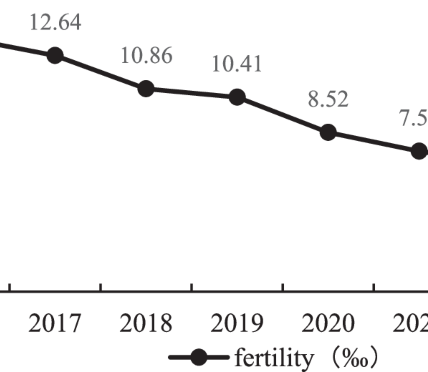Restrictions and bans on exports of metals critical for the world’s green transition are gaining traction but could be a double-edged sword. Indonesia imposed a ban on nickel ore exports in 2013 and 2020, and Zimbabwe’s on chromium in 2021. Bans on the exports of commodities are an extreme example of export restrictions that have been deployed around the world. According to the OECD, between 2009 and 2020, fifty-three countries instituted export restrictions on critical minerals (Kowalski and Legendre 2023). These policies can restructure an economy but can also raise the global costs of climate-change mitigation. With so much at stake, it is worth assessing their impact on the global green transition and the economic trade-offs for developing countries.
The Objective of Export Bans
Export restrictions lower the domestic price of commodities relative to global prices, benefitting the country’s downstream industries. The developmental objective of export bans is to support these downstream industries, which might face market failures that prevent their existence and growth. In economic terms, the downstream industries might be “infant industries.” Industry-wide production externalities could benefit the entire value chain, leading to a decline in long-term average production costs with increased production scale. Economists refer to this phenomenon as “learning by doing.”
The Market Failures: Beyond Infant Industries
A key question is what constraints prevent the development of downstream industries, including metal ore refining and the manufacturing of green goods. Lowering national production costs can enable an industry to learn by doing, allowing the infant downstream industry to be born, grow, and eventually reach maturity if demand for downstream industries also rises. There must be an expectation that global demand for refined metals and green goods will increase so that, eventually, the export ban could be lifted without dampening domestic production in the downstream industries.
However, learning by doing alone is not sufficient to make export bans on mineral ores successful. An export ban on the primary ore reduces its domestic price, thus reducing the costs of the infant downstream industry. When the cost decline is significant, the downstream industry can survive as long as the ban is in place. However, the existence of declining average production costs due to learning by doing does not guarantee that the industry can be profitable without the implicit cost subsidy created by the export ban on the primary ore. Growth in demand for downstream goods is also necessary.
An additional complication is that elevated global prices of the metal ores provide incentives for global players to innovate in search of substitutes for the critical ores or to reduce the amounts needed to produce batteries, for example. Hence, even if demand for the downstream products increases, the demand for the ores might not. Ideally, policymakers would be armed with forecasts of global demand regarding quantities and prices of the ores, their downstream goods, and potential substitutes. This is a high bar for policy planning, as long-term forecasts are error-prone, particularly for prices of goods that can fluctuate with unexpected innovations (Arezki et al. 2014).
If the demand for refined metal or green goods is expected to rise, but there is a failure in credit markets that deters long-term borrowing to finance domestic production, then an industrial policy to stimulate domestic production could be desirable. When demand grows faster than global supply, global prices of downstream goods rise, making the export-ban-induced cost reduction unnecessary for the industry’s viability. Academics have recognized issues concerning infant industries for decades (Corden 1974, Chapter 9).
The Costs and Benefits of Export Bans
Commodity export bans can have both benefits and costs. The benefits depend on the extent of cost reduction brought by the downstream industry’s learning-by-doing and on demand growth. The costs are concentrated in the primary ore sector. As the national metal ore market moves toward autarky, the quantity of ore supplied to the domestic market increases while the supply to the global market is prohibited. Domestic prices fall, and global prices could rise if the country is a large global ore exporter, improving the country’s terms of trade.
Another potential cost of export bans is the risk of retaliation. Export restrictions are not permitted under most interpretations of World Trade Organization rules (Article XI of the GATT 1994). Importers of the critical ores could retaliate by imposing import restrictions on any product exported by the country implementing export bans. Thus, the costs borne by the primary ore mining industry, plus the costs from retaliation, could outweigh the benefits brought by the growth of downstream industries, depending on the growth rate of demand for downstream products.
In summary, costs are associated with lower producer surplus and foregone exports from the ore mining industry. The benefits depend on the downstream industry’s response. The industry will mature only if global demand for and the prices of downstream goods rise sufficiently. Moreover, if the technology to refine the ores comes exclusively from foreign companies, the emergence of downstream industries might not benefit domestic factors of production.
Alternative Policies
Subsidies for downstream industries could accomplish the objective of commodity export bans by reducing production costs without the revenue losses resulting from lower ore exports. If fiscal constraints prevent the use of subsidies, export taxes could achieve part of the desired cost-reduction effect while also raising revenues. However, any export restriction can legally justify retaliatory measures by trading partners.
Ultimately, if the downstream industry is constrained or non-existent due to industry-wide economies of scale, even when global demand is expected to grow, one could ask why capital markets would not offer favorable access to credit to allow the industry to emerge and grow on its own without needing government intervention. Perhaps private capital markets are hopelessly myopic and more risk-averse than the government.
Conclusion: Balanced Approach
The message is clear: while export bans can support domestic downstream industries when capital markets are myopic, they pose significant risks and costs, including potential retaliation from trade partners and the challenge of accurately forecasting global demand. Success depends on understanding global market dynamics and accurately anticipating future demand. Alternative measures like targeted subsidies or export taxes may achieve similar objectives with fewer adverse effects. A balanced approach is needed to support domestic growth while maintaining healthy international trade relations.
References
Arezki, R., D. Lederman, and H. Zhao (2014), “The Relative Volatility of Commodity Prices: A Reappraisal.” American Journal of Agricultural Economics 96(3): 939-951.
Corden, W.M. (1974), Trade Policy and Economic Welfare. Clarendon Press: Oxford, England.
Kowalski, P., and C. Legendre (2023), “Raw materials critical for the green transition: Production, international trade and export restrictions”, OECD Trade Policy Papers, No. 269, OECD Publishing, Paris,





